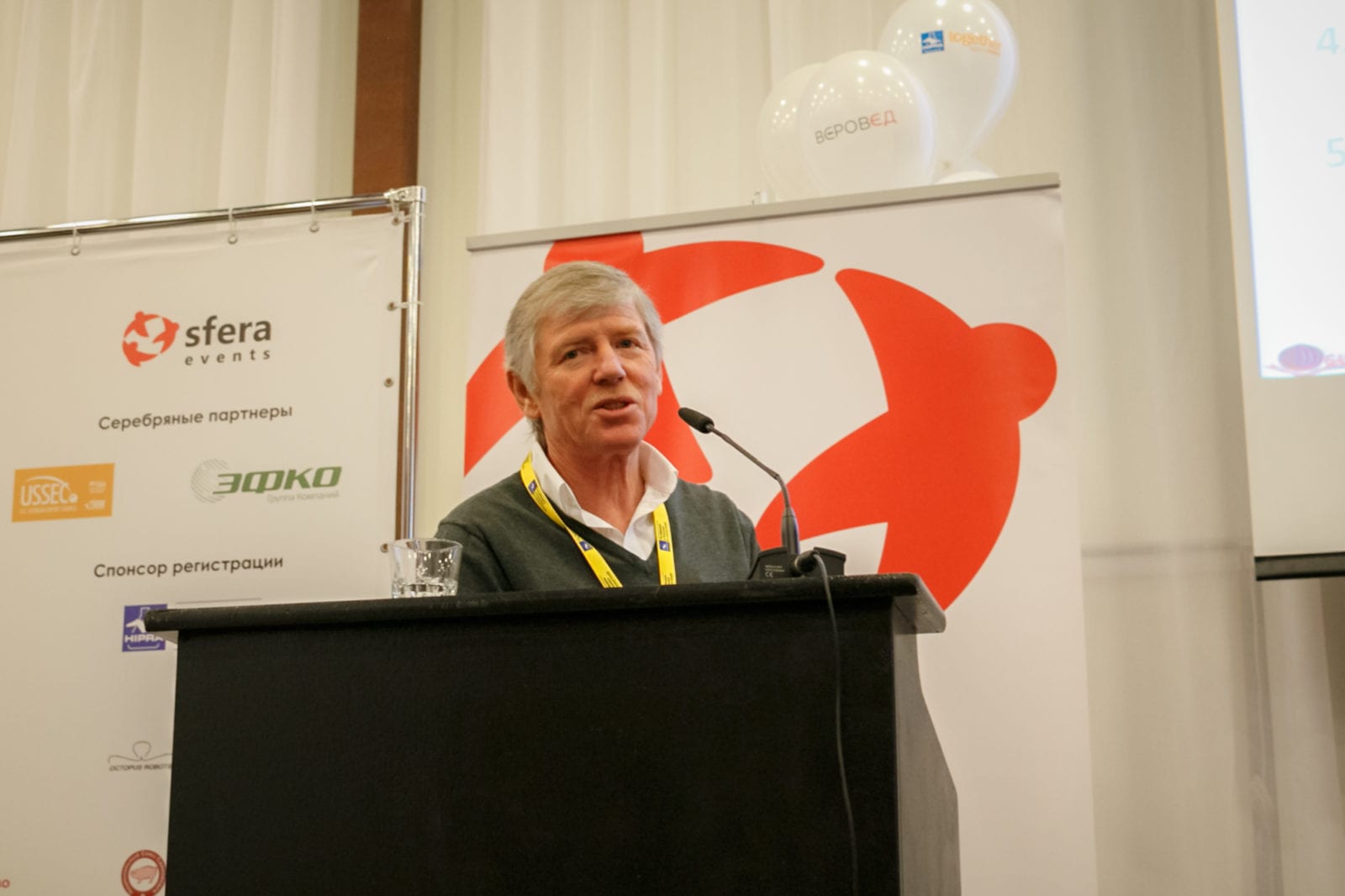USSEC Sponsors 2nd International Forum Agro.Pro 2017 in Russia
- Category:
- Animal Utilization
- General News

The 2nd International Specialized Forum “Agro.Pro- 2017 took place on November 21 and 22 in St. Petersburg, Russia. The conference focused on pig breeding: selection, genetics, feeds, and veterinary. Over 120 participants attended the conference, including Russian and Commonwealth of Independent States (CIS) livestock and feed production managers, nutritionists, researchers, and purchasing managers. Russian and English were the working languages of the forum and the speakers hailed from Russia, Ukraine, Belarus, Spain, China, the Netherlands, and other countries. USSEC was a silver partner of the event alongside leading Russian agroholding company group EFKO.
USSEC consultant Dr. Jan van Eys and Dr. Maria L. Domoroshchenkova attended the event.
Pork production in Russia has been growing at an unprecedented and uninterrupted pace. In the last decade alone, domestic pork production has doubled. Russia is in the top five largest producers of pork. In 2016, the country produced 3.39 million metric tons (MMT) in slaughter weight or 4.35 MMT in live weight. It is expected that Russia will reach self-sufficiency in pork production by 2020.
The Russian swine market and overall livestock production sector continues to struggle in terms of prices for end products, excessive cost for raw materials, and a significant series of health threads. The Russian feed industry still uses a high inclusion rate of grains (a 70 percent average) as a solution to the deficiency in protein ingredients. Education of local customers in modern feeding practices and nutritional benefits of soy derivatives and high quality of U.S. Soy in particular is obviously important for an increase of soybean meal dosage in local feed and for a potential growth of demand for U.S. Soy.

During the break, there was ample opportunity for exchanges with local customers. All conference attendees received the USSEC brochure, “Nutritional Value of U.S. Soybean Meal,” published in Russian and distributed at the USSEC booth during the forum breaks.


The two-day event was an excellent opportunity to interact with local customers, industry professionals from commercial feed and swine integrations, and trading companies and to share data on the world and U.S. soy industries and market situation and to demonstrate the nutritional benefits of U.S. Soy.
